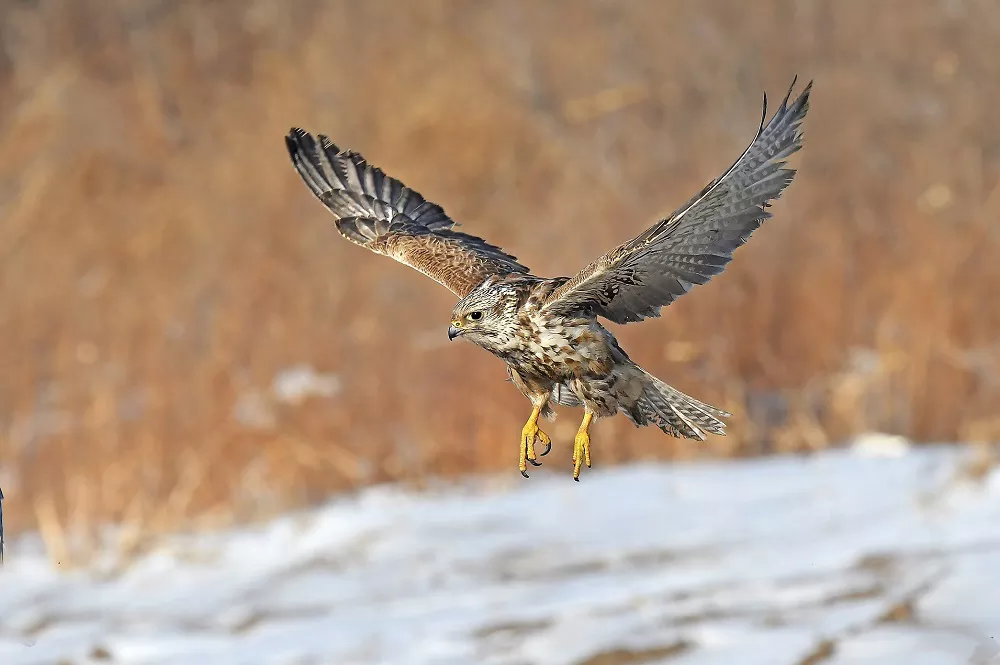Saker falcons and gyrfalcons are both impressive and majestic birds of prey, known for their hunting prowess and beauty. While they may appear similar at first glance, there are significant differences between these two types of falcons. In this article, we will explore the key differences between saker falcons and gyrfalcons.
Physical Characteristics
Saker falcons (Falco cherrug) are medium-sized birds, with a wingspan of around 1 meter and a weight of approximately 1.4 kilograms. They have a distinctive facial pattern, with a black “moustache” stripe and white “eyebrows”. Saker falcons have a brownish-grey plumage, with darker brown wings and a lighter underbelly.
Gyrfalcons (Falco rusticolus), on the other hand, are larger and heavier than saker falcons, with a wingspan of up to 1.5 meters and a weight of around 2 kilograms. They have a white or pale grey plumage, with darker markings on their wings and tail feathers. Gyrfalcons have a prominent black moustache stripe, which distinguishes them from other falcon species.
Habitat and Range
Saker falcons are native to central Asia, from eastern Europe to China. They inhabit a range of habitats, including grasslands, semi-deserts, and mountains. Saker falcons are also bred in captivity and used for falconry.
Gyrfalcons, on the other hand, are found in the Arctic and sub-Arctic regions of North America, Europe, and Asia. They inhabit tundra, coastal cliffs, and mountainous areas, and are adapted to cold temperatures and harsh weather conditions.
Diet and Hunting
Both saker falcons and gyrfalcons are skilled hunters, with powerful talons and sharp beaks that they use to catch and kill their prey. Saker falcons hunt a range of small and medium-sized birds, such as pigeons, doves, and grouse, as well as small mammals, such as rodents and hares.
Gyrfalcons, however, are known for their ability to take down larger prey, such as waterfowl and ptarmigan, as well as mammals like lemmings and rabbits. They are also one of the few bird species that hunt other birds in flight, often chasing their prey at high speeds and performing impressive aerial maneuvers to catch them.
Conservation Status
Both saker falcons and gyrfalcons are listed as species of least concern by the International Union for Conservation of Nature (IUCN). However, saker falcon populations have declined in some parts of their range due to habitat loss, hunting, and capture for the falconry trade. Gyrfalcons, on the other hand, have a relatively stable population, although they are vulnerable to habitat destruction and climate change in some regions.
In conclusion, while saker falcons and gyrfalcons share many similarities, there are significant differences between these two species in terms of their physical characteristics, habitat, diet, and conservation status. Whether you are an avid bird watcher or simply appreciate the beauty and complexity of the natural world, these two majestic birds of prey are worth admiring and learning more about.


 Facebook
Facebook  Instagram
Instagram  Youtube
Youtube 